What a wonderful moment of balancing on your skateboard, whistling your favourite tune, and riding around the area with smiling teeth- Yes, It can feel like riding your own flying carpet sometimes!

On top of it, if it’s a battery-powered electric skateboard, this would make your experience even more enjoyable as it gives you the power to travel as fast as traffic, speed up hills, and brake gently down. You can buy your e-board from the Veymax store Right now.
There’s no doubt that this perfect thing would make you roam around at the faster speed of 29mph, with no physical excursions and a smooth, hassle-free ride, unlike its manual counterparts.
But with that said, does it make you wonder if “Electric skateboards are safe to use?”
Well, with every fun tool comes great responsibility, and motorized skateboards are not free of hazards if they’re used irresponsibly.
This article outlines all the nitty gritty of the electric skateboards, from its basics and safety concerns to overcoming measures- so you can make your ride safe and magical.
So, What Exactly are Electric Skateboards?
Clearly speaking, An electric skateboard, or e-board, is just like a regular skateboard with an added part, and that is the electric drive system. With Veymax, you can enjoy a blend of the thrill of skateboarding with the ease of electric power.

In fact, this personal mobility device has two sets of wheels mounted on a board or deck that run through a battery, motor, and various electric components, removing the need for riders to use their legs to accelerate or decelerate.
So despite relying on your feet to kick, push, and brake, the remote with an electric skateboard does it for you. This remote communicates with the motor signaling it to go forward, slow down, or stop. All you have to do as the rider is lean, turn, and enjoy the ride.
Popularity And Rising Use In Urban And Recreational Settings
Electric skateboards have emerged as a game-changer in the transportation industry, offering a unique and exciting way to commute and navigate long distances of congested vehicles or foot traffic. Even the Veymax nano mini is small and lightweight enough to be carried around indoors.
Their value as a useful transportation and recreational tool is evident in their simple motor and user interface designs. The speed, maneuverability, and unbeatable efficiency of a motorized Skateboard opens up a new industry, with businesses specializing in e-boards, accessories, and related services.
The rise in popularity of motorized skateboards can be attributed to a number of factors; the most dominant is their lightweight lithium-ion batteries that offer extended range and faster charging times.
The powerful devices allow riders to reach higher speeds and tackle steeper inclines. Additionally, the regenerative braking systems have made electric skateboards more energy-efficient, further contributing to their appeal.
This portable mode of transport is an innovative, sustainable, and efficient alternative to cars and is greatly helping to reduce traffic congestion and make cities more livable.
Surprisingly, Riding the Veymax e-board shrinks your commute to work and provides a thrilling experience that appeals to people of all ages. You’ll arrive feeling energized, refreshed, ready for the day – and not at all sweaty.
Provided that they operate on rechargeable Li-ion batteries, it guarantees a reduction in carbon footprint which implies that smog and other air pollutants are less of a problem.
Overview of Electric Skateboards
You may find your regular skateboards, on which you cruise, visually similar to the electronic ones you checked online, but they act very differently when put to use. An electric skateboard means that the basics are changed.
Simply put, this is a regular skateboard but with a little tech magic sprinkled on. This transporter uses a drivetrain made up of an electric motor, a battery, and a remote control, allowing you to zip around without having to kick off the ground.
How Electric Skateboards Work?
You can kick-start your boarding adventure by bringing the board out to a broad and even platform.
Using a remote control, you can control the entire system of the boarding. This means handling the speed of the board and the direction of your travel.
If you want to go faster, you need to increase the speed on the remote control, and it will send a signal to the motor to spin faster, which then propels the skateboard forward.
The battery inside provides fuel to the motor. It's usually a lightweight and high-energy-density lithium-ion battery, making it a suitable choice for electric skateboards.
This battery can be recharged using a charging cable, and the length of the charging time depends on the charging speed and the battery size.
Electric skateboards are equipped with a built-in braking system, which gets activated as the rider slows down the skateboard on the remote control. This slows down the wheels, stops the motor from spinning, and brings the skateboard to a stop.
Key Components: Motor, Battery, Remote Control, Etc.
Motor
The component in the machine that gives your electric skateboards that zesty kick. They're not just hunks of metal; they're the heart and soul, propelling your vehicle forward in the quest to be perpetually earlier to places.

The type of motor mostly used in electric skateboards is the high-power hub motor, which offers high efficiency, reliability, and longevity. The motor power is measured in watts, and the higher is the wattage, the more powerful the motor will be.
Battery
A component that powers an E-board’s motor and other electrical elements is the battery. Housed safely beneath the deck, this power box fuels your adventures, ensuring top-notch battery performance and making sure you're never stranded mid-zoom.
It’s the heaviest, largest, and most expensive part of an electric longboard. The bigger the battery, the longer the range, and the higher the price.
Remote Control
A way for you to control the device is a remote control. This includes handling the speed and the brakes of the skateboard, allowing you to manage your ride as you please.
Different e-boards use different kinds of remote controls. Some have a joystick placed on it so that you can accelerate and decelerate- Tilting forward would accelerate the board, and; tilting backward and the brakes are applied.
Others have a trigger on the remote's rear to do the same: press hard to go faster, lighter to go slower.
Varieties And Capabilities (Speed, Range, Size)
Luckily, electric skateboards come in various sizes, speeds, and ranges, so decide how fast you want to blaze those trails or How long you want your speed demon to last.
If you want to feel the wind against your face, go for a high-speed model. Some boards, like the Veymax Roadster X4, can reach 29 mph. On the other hand, if you're more of a chill cruiser, a model like the Veymax Nano Mini might be your jam, letting you ride the breeze at a more relaxed 18 mph.
Safety Concerns with Electric Skateboards
E-boards seem like a fun and exciting way to get around, but with thrills come easy, but so do spills. Whether you’re a newbie just getting the hang of that powered deck or a seasoned rider with the scars to show for it, there’s always a curveball waiting.
Studies have shown that mishandling your board can possibly lead to several accidents and injuries. Even at the beginner level, sometimes, the acceleration and speed of an e-board can catch a user off-guard. Riders of e-boards require time to learn how to make tight turns, understand pushback, float in place, and navigate heavy pedestrian traffic.
Know that it’s not simply about hopping on the board and zooming off into the sunset rather, it’s an art and a skill that demands understanding and respect for the ride. So, here are some of the concerns.
1. Speed-Related Risks
E-boards can reach high speeds very quickly, up to 40km/h. In such cases, a rider needs to put in an extra struggle to maintain the balance and stability of the high speeds, which upon mishandling, could result in some serious accidents. This can even worsen if the Board hits an obstacle or another person.

Obviously, you’re at liberty to test the speed and capabilities of your electric skateboard, but start slow and then gradually increase your speed and distance over time.
Remember that rushing is not preferable in any case, especially when you’re not yet comfortable with the controls and handling of your electric skateboard.
So avoid taking your electric skateboards on crowded sidewalks and parks, as they increase the risk of collision and make it more likely that riders would be a victim of injury if they fall off the Board.
2. Battery Safety And Fire Hazards
E-boards are powered by Lithium batteries whose contents are highly toxic, dangerous, and flammable, and they often tend to overheat, short circuit, or catch fire due to chain reaction that causes heat buildup from overcharging or overheating.
Therefore, special care is all that you need. Some lithium batteries are classified as hazardous waste, while others can be discarded by taking them to battery recycling centers.
These hazards increase when batteries wear out or when multiple devices are stored together.
3. Comparison With Traditional Skateboards And Other Electric Vehicles
Traditional skateboards and other Electric vehicles are popular modes of transportation, but they differ significantly in their design, capabilities, size, and riding experience.
Traditional Skateboards are constructed from durable and lightweight materials, allowing riders to recreate the feeling of surfing on land. It‘s best for maneuverability and the ability to pull off tricks. These skateboards are better suited for flat areas with little obstruction.
Unlike conventional skateboards, electric vehicles are self-propelled vehicles powered by an electric system. They are better suited for areas with lots of obstacles, such as streets and sidewalks.
Statistical Analysis of Accidents and Injuries
Although skateboarding is a fun, exciting and recreational activity, it carries along a serious risk of injury. Approximately 50,000 injuries requiring a visit to the emergency department occur every year.
Due to the inherent mobility of these electric skateboards, the data from the National Safety Council (NSC) shows that it has put many e-skateboard riders at a very high risk of injury-inducing accidents.
The chart below determines the total estimated injuries in a particular recreational sector, and apparently, skateboarding is the fifth among the categories resulting in emergency visits and injuries.

According to this data, skateboarding ranks fifth and seems more menacing than many people think. A study shows that each year, Skateboard-related injuries record for an estimated 50,000 emergency department visits and 1500 hospitalizations among children and adolescents in the United States.
Many studies have reported these injuries to be linked to:
- Cuts from pointed objects like curbs, rocks, or other skateboards.
- Bruises and abrasions from falling on the sidewalk or street.
- Broken arm, hand or leg bones from falling on them.
- Head injuries from falling and hitting your head on the pavement or from being hit by another rider.
Apparently, there’s a risk in skateboarding, but you can be safer by avoiding large ramps and downhill and wearing proper safety gear–especially for young and inexperienced skateboarders.
Safety Features and Technological Advancements
1. Built-In Safety Mechanisms (E.g., Automatic Braking, Speed Limiters)
Making a thrill ride on your electric skateboard can be super fun, but you may experience an unknown fall while practising different tricks or stumble across a rock. Before stepping onto your electric skateboard, it’s best for Riders, experienced skaters, or absolute rookies to get used to built-in safety mechanisms to be able to operate them safely and avoid an accident.
- Some commercially available electric longboards have built-in weight thresholds, which means that it’s able to sense when the weight atop the board is significantly less than that of a regular user (a threshold value of 70 pounds). If the weight sensed is below the threshold for a second or more, motor power is reduced to the maximum speed of a typical walking pace.
- Most electric skateboard remotes have safety switches, such as dead-man switches, which prevent accidental acceleration if the rider falls off or drops their remote.
- Nearly all electric skateboards are equipped with an ESC (Electronic Speed Controller), a device that acts as the control center, managing the power flow from the battery to the motor. This system ensures a seamless riding experience by optimizing acceleration, braking, and overall speed control when an input signal is received from the rider.
2. Advances In Battery Technology And Board Stability
The health of the battery is crucial to the success and smooth functionality of electric skateboards. Obviously, a failed or malfunctioning battery would ruin your boarding vibes.
By becoming fluent in battery basics and its emerging advancements, you can better accomplish more adventures with your e-skateboard and have fewer regrets over your choices regarding its power source.
Nowadays, there’s this unique technique, “Regenerative braking,” that enables the skateboard kinetic energy to be converted back to electrical energy during braking (deceleration or downhill riding). The converted electrical energy is stored in energy storage devices such as batteries to extend its lifespan.
Lighter-weight batteries are more enjoyable and practical for many riders as they put less strain on the rider and offer greater portability. New materials and pack designs have achieved under 10Wh/kg, which could reduce total e-skateboard weight substantially.
New battery types like solid-state, lithium-sulfur, and lithium-air represent the edge of future possibilities for motorized skateboards but are not quite ready for mainstream use. Unlike today's best li-ion, They can eventually deliver higher energy density, more stable performance in extreme heat or cold, faster charging, and more excellent safety.
Best Practices for Safe Riding
1. Importance Of Personal Protective Equipment (PPE) - Helmets, Pads, Etc.
To enjoy the ever-lasting thrill of e-boarding, safety is paramount, and personal protective equipment (PPE) serves as the crucial line of defense against potential hazards. Ranging from helmets, gloves, pads, and eye protection, PPE is designed to shield riders from injuries and riding mishaps.
- Head injuries are no joke; a Helmet and protective gloves are the bare minimum equipment on every ride, even if it’s “just riding around the small area with your buddy.” You can use a regular skateboard helmet or even a professional full-face helmet for maximum protection.
- It is always said that the more, the better - so protect your back, elbows, shoulder, knees, and hands with gears and pads for that safer ride. It may not look cool, but it’s better to be safe than sorry!
- Also, don’t override beyond your skill level or at the speed you can’t handle. It makes no sense to compare with the ticktockers you see on the internet.
- Be conscious of broken passages, uneven roads, or slightly wet areas to avoid falls or drops.
- It’s pretty obvious that you shouldn’t wear flip-flops or sandals when riding on an electric skateboard. Shoes with a flat sole will give you better control of the board.
- Lastly, make use of electric skateboard lights to ensure maximum visibility at night.
2. Rider Training And Skill Development
Just like every other electronic device, motorized skateboarding requires training such as hardware handling, skateboard stance, and foot placement to get along with that smooth ride. When you master the basics, you’re not just restricted to commuting but can enjoy endless adventures, from basic maneuvers like ollies and kick flips to more advanced tricks like board slides and 360 spins.
To have a good start, get comfortable with riding and controlling your electric skateboard, as well as develop good balance and coordination.
Obviously, you must know what buttons do what on the remote control, such as changing speed modes, setting cruise control, and turning the board on and off. Also, you should play around with the throttle to get to know how the motors respond as you accelerate and brake in each speed mode.
Moreover, Veymax remote controls have LED displays that show useful information while you’re riding. Things like current speed, battery levels for the board and remote, trip distance, and more speed. Learn where these buttons are located on the display so you only need to have a glance at your remote, and so you don’t need to take your eyes off the road for too long when riding.
Simply, don’t try taking chances by skateboarding faster than your experience allows or faster than is safe for the surrounding conditions.
These skills will lay the foundation for more advanced tricks and allow you to ride confidently.
An important note here is taller riders generally need a longer deck to have a comfortable stance. Or if you intend to travel long distances or ride faster, you’ll also want an electric longboard. Similarly, if you want an eBoard for inner-city streets, then a short electric board might be the way to go for you.
3. Awareness Of Local Laws And Riding Etiquette
The local laws can vary significantly from one jurisdiction to another. To ensure compliance, it’s crucial to research and understand the specific regulations in your area. Some standard regulations may include the following:
- Age Restrictions: Many places have minimum age requirements for electric skateboard riders, often aligning with the legal driving age.
- Speed Limits: Some areas may impose speed limits on electric skateboard usage, typically around 15-20 mph (24-32 km/h).
- Helmet Requirements: Wearing a helmet may be mandatory for riders of electric skateboards in certain locations.
- Designated Routes: Some regions limit electric skateboard usage to specific paths or bike lanes.
- Traffic Rules: Riders may need to follow standard traffic rules, such as obeying traffic signals and yielding to pedestrians. It’s essential to surround yourself with these regulations and adhere to them to avoid potential fines or legal issues.
The Role of Community and Culture in Promoting Safety
Historically, there weren't any safety concerns for skateboarding publicly. However, as its popularity grew, forward-thinking educators, clubs, and communities began to see paths for integration.
The first wave of skateboarding safety is used by providing carefully safe places to riders away from busy streets and highways and making them wear protective gear as a compulsory requirement.
Authorities must promote legislation that mandates safety measures such as wearing helmets, requiring age limits, and setting speed limits for electric skateboard users on public roads and sidewalks.
Communities and organizations should implement safe skateboarding programs that teach fundamentals that can help prevent injuries and foster a positive skateboarding environment. In addition, awareness and learning plans that are in compliance with National Physical Education Standards also provide an excellent exercise for safe and sound e-boarding.
Beyond teaching how to skate, state-certified experts also help spread the principles that are unique to skate culture and its codes. The instructors teach their students how to be independent in a skate park in order to practice safely and with respect for others.
Future of Electric Skateboarding
While the world strives for sustainable living and mobility, cities around the globe are undergoing a dynamic shift in their approach toward urban transportation. From cycling and ride-sharing to public transit, the electric skateboard is the leading industry that is progressively making its space.
Continuous technological advancements are happening, and there is a growing demand for sustainable transportation options. As more people recognize the benefits of electric skateboards, we can expect to see an increase in their adoption.
One area of development is the integration of smart features into electric skateboards. Imagine a skateboard connecting to your smartphone, providing real-time data on battery life, speed, and distance traveled. This would not only enhance the riding experience but also improve safety and convenience.
Another exciting prospect is the use of artificial intelligence in electric skateboards. AI algorithms could optimize battery usage, predict maintenance needs, and even assist with navigation. This would make electric skateboards even more efficient and user-friendly.
All in all, we can say that from its practical applications to its potential future developments, electric skateboarding is a field that is worth exploring in greater detail.
Conclusion
Skateboarding is now a recognized sport and more than just an exciting and extreme form of outdoor play. Throughout the years, there have been various new releases of skateboards, and proudly Veymax skateboards are at the forefront of performance.
Before embarking on an electric skateboard adventure, knowing enough about the device’s key components and functionalities would be a good start.
Always wear protective gear, stick to rules, and regularly maintain your board to explore every road with confidence.
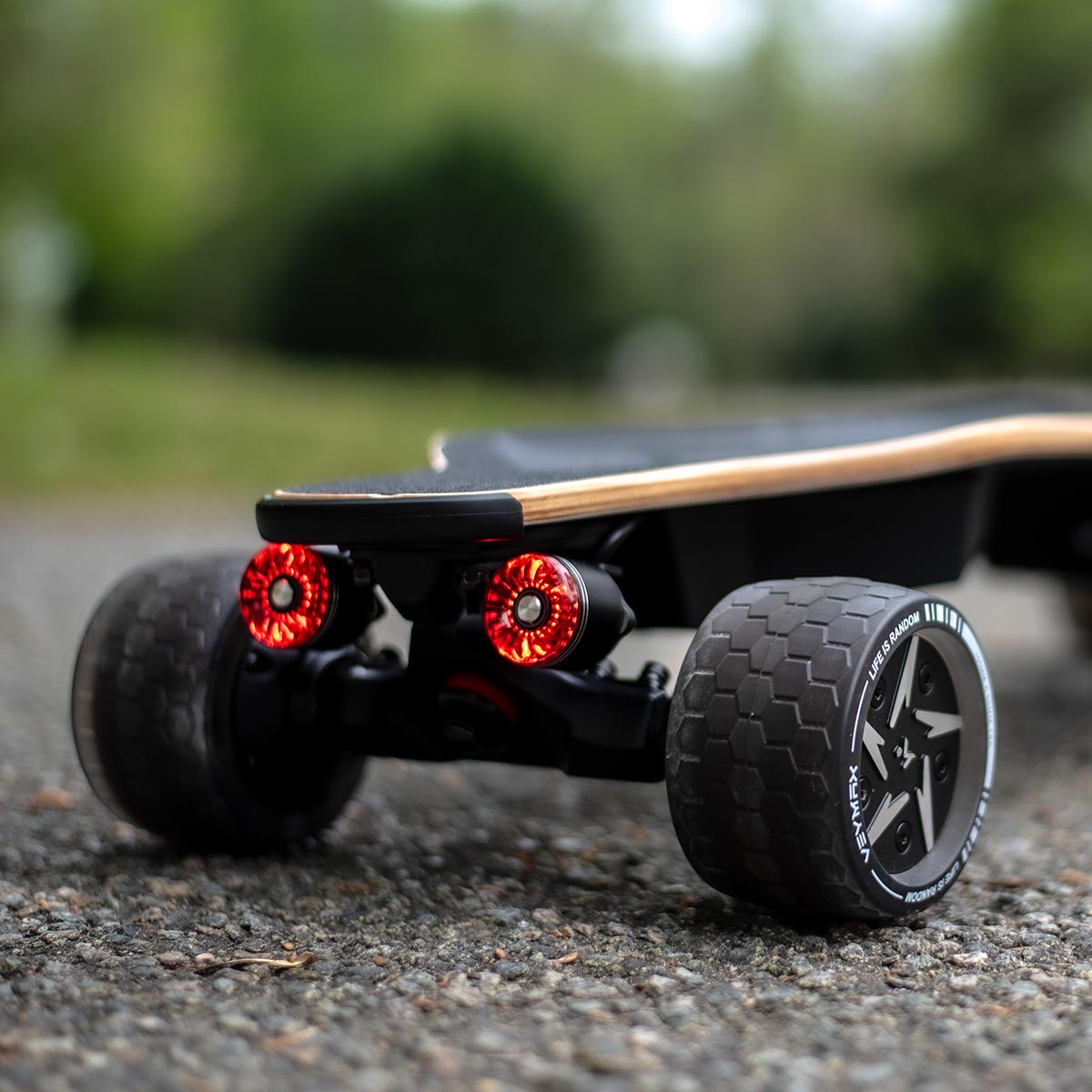
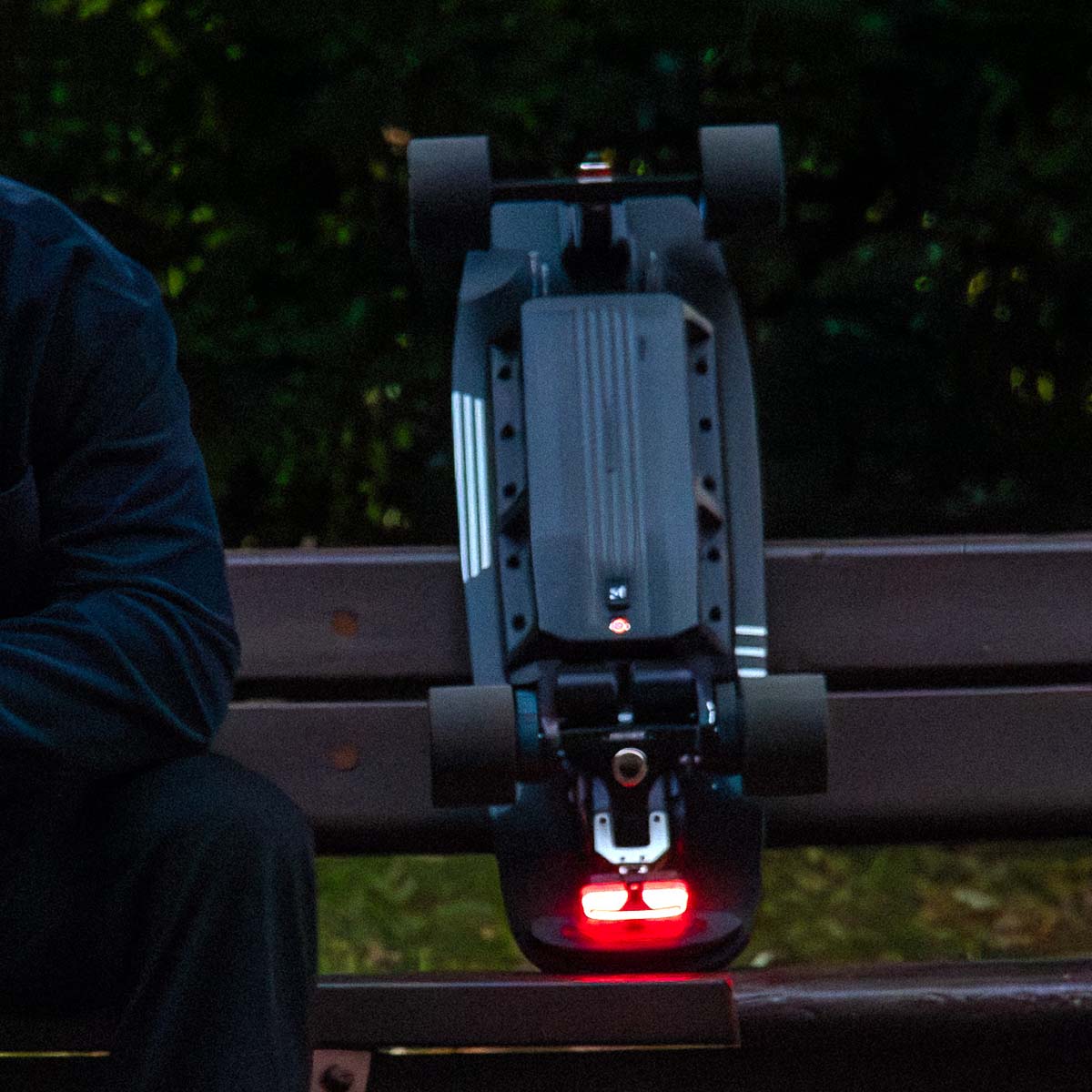
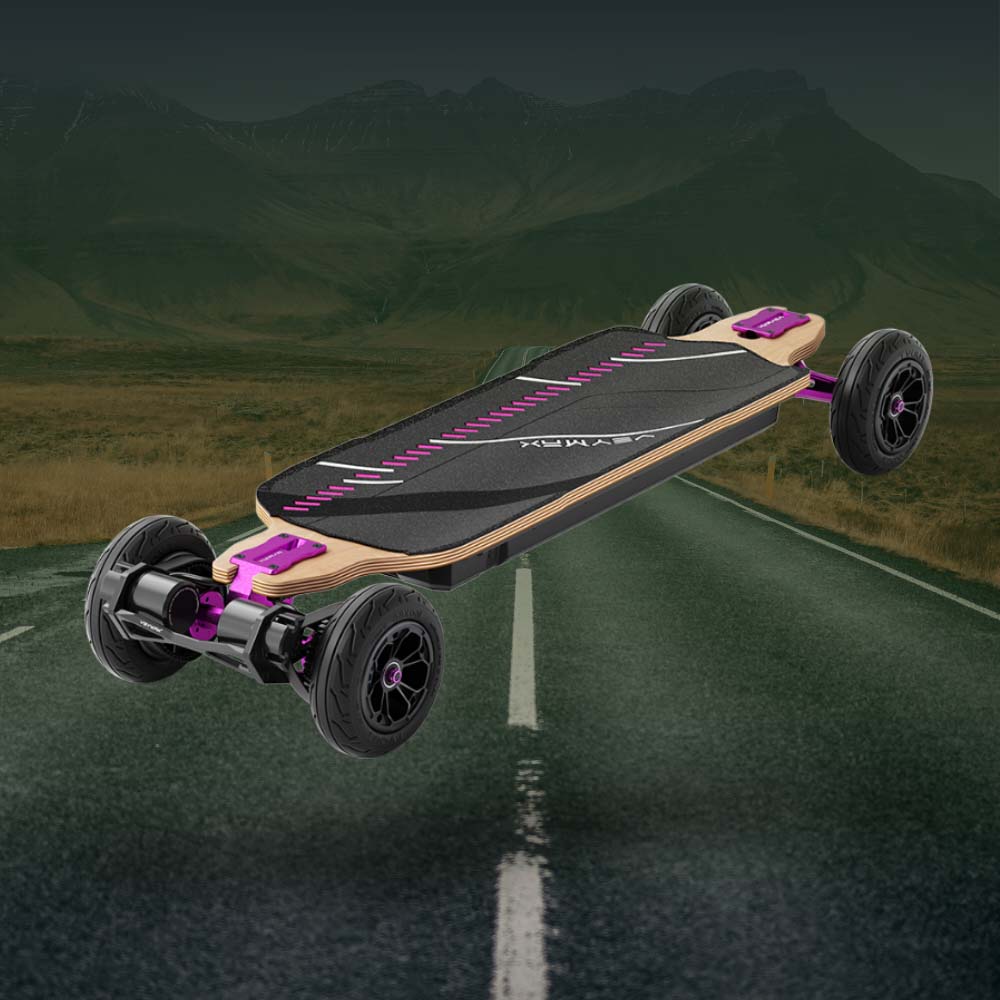
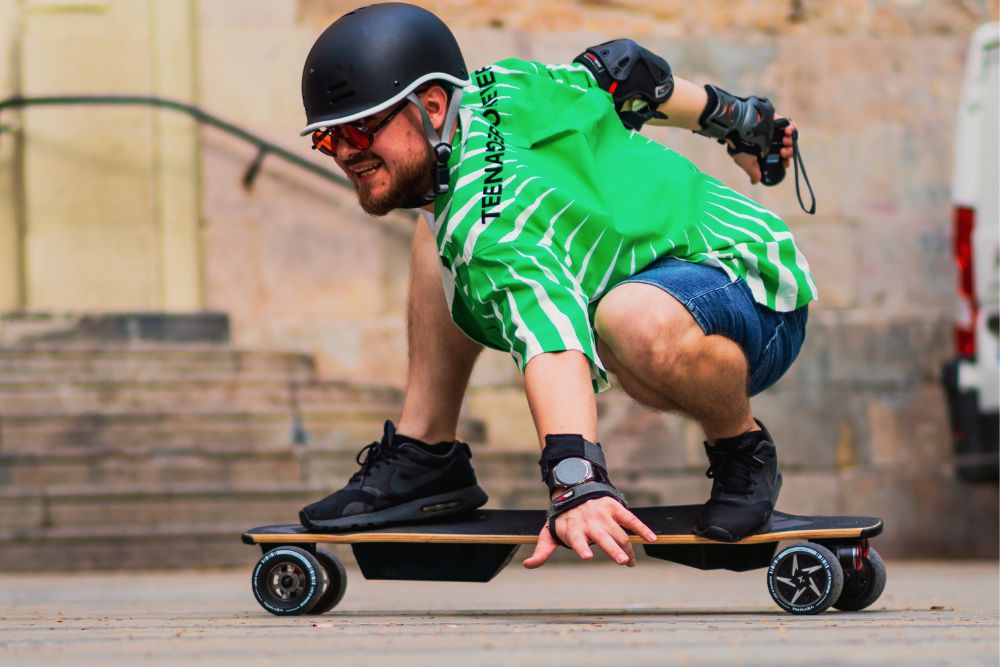
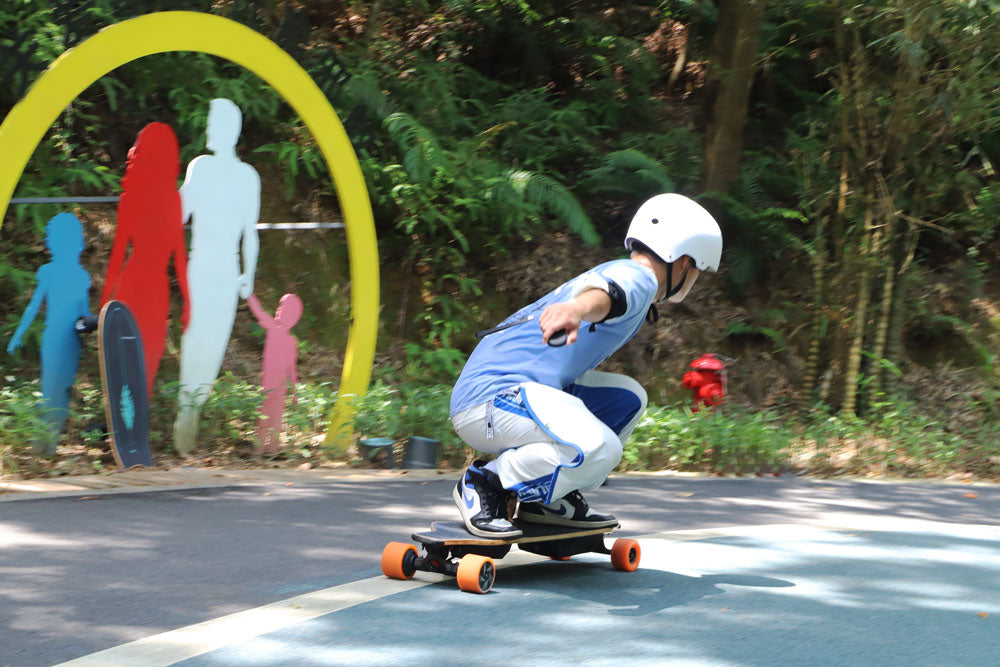
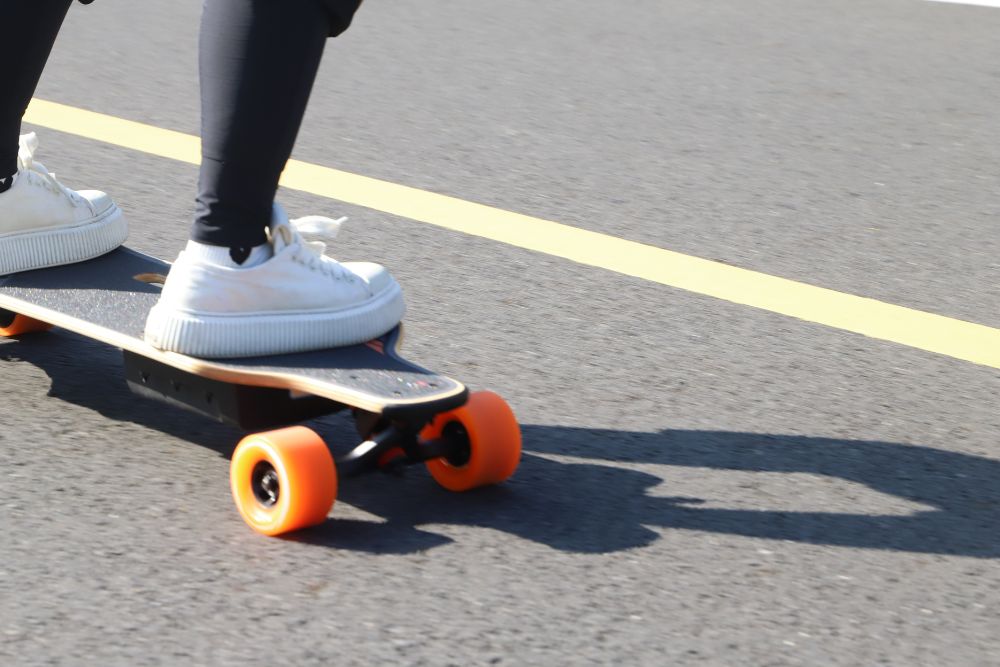
Leave a comment
This site is protected by hCaptcha and the hCaptcha Privacy Policy and Terms of Service apply.